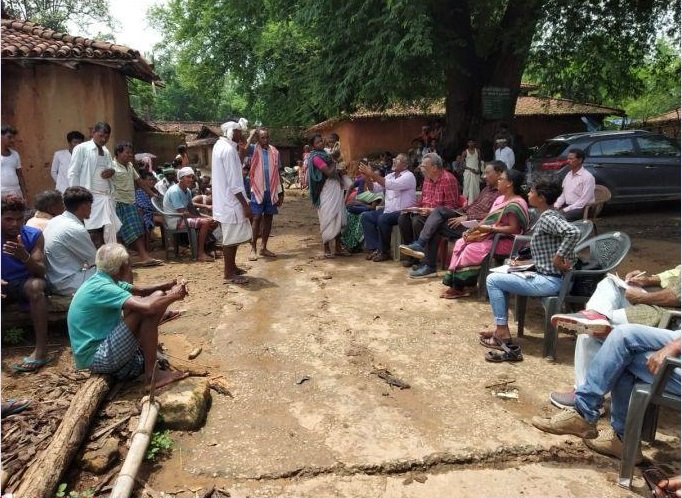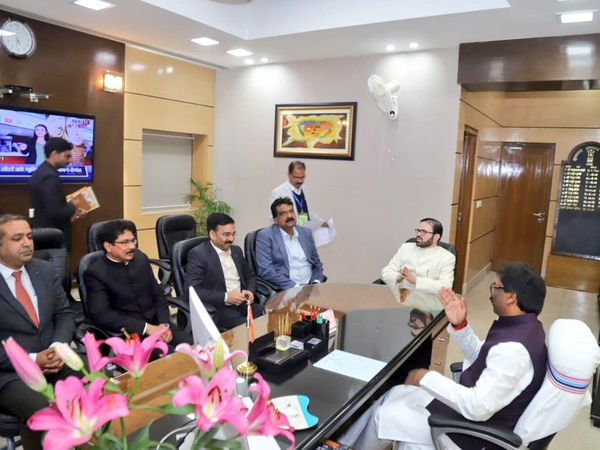Source – outlookindia.com
The Pathalgadi movement was started to save the land and forest areas in Jharkhand, but now the movement is also marked by a series of violence. The purpose of the Pathalgadi movement was to make the Gram Sabhas omnipotent in tribal areas to reclaim their rights to ”jal, jangal and zameen”. The people wanted the Gram Sabhas to grant permission for mining and development work in their tribal areas and not by the elected government.
After the killing of seven people for opposing the movement in West Singhbhum recently, there are fears of violence in other areas too. When the Hemant Soren government came to power, it announced the withdrawal of the old sedition cases against Pathalgadi activists. This, however, caused much resentment in the tribal community.
Pathalgadi hit the headlines when seven Pathalgadi opponents were killed in Burugulikela village in West Singhbhum district on January 19. Activists working in the tribal areas say even now there is confusion on whether the killings took place because of the Pathalgadi movement.
The police are still investigating the killing of seven villagers in Burugulikela village, about 80 km from the district headquarters, but they have so far investigated it from the angle of personal enmity.
Sources however said that the Pathalgadi movement may be the main reason behind the killings. The clash took place between the supporters and the opponents of the movement over the development works to be carried out without any interference from the tribal community. Police sources said that a section of villagers, reposing complete faith in the Gram Sabha, may be behind the killings.
Jarom Gerald Kujur, Secretary of the Central Jana Sangh Samiti, an NGO working for the tribals, said that the incident is under investigation, hence it cannot be linked to the Pathalgadi movement yet.
He said, “Pathalgadi is a very old tradition. The Birsa Munda Samaj mentions its rule by placing large stones outside the village, which is called Pathalgadi, while the Oraon Samaj collects a heap of stones, known as keystones.”
He said that these stones indicate the boundary of the villages.
Kujur said that the history of the tribals shows that the Munda tribals in Singhbhum and Khunti areas had been trying to establish a self-governing system since the time of the British, and the Pathalgadi movement is a product of that struggle.
The movement which started from the Khunti region of Jharkhand, spread to other areas – Gumla, Shimdega, West Singhbhum in the course of time.
People say that the government must understand the sensitivity and take appropriate steps, otherwise this age-old custom may deviate to a turbulent and violent path.
“The government neither understood the sensibility of it nor is it understanding it now,” said James Herange, a Jharkhand social activist and convener of the Jharkhand NREGA Watch.
“This peaceful majority tribal area is once again becoming turbulent. The government needs to convince all, including the opposition,” he said.
He said that Pathalgadi is not a new practice. It is actually said to be the monuments of those stones, which have a very ancient history. Even today it is practiced in tribal societies across many states.
Herange said: “There was fear and anger in the tribal society against the government when it introduced amendments to the Chotanagpur Tenancy Act (CNT) 1908 and the Santhal Pargana Tenancy (SPT) Act 1949. The tribal community feared that the government was going to hand over the rights of forest and land to the capitalists in the name of mining and industrialisation.”
Panic gripped the Bundu and Tamar communities and the possibility of bloody conflict increased in these areas after the government”s move.
District Collector of West Singhbhum, Arwa Rajkamal, said that investigation is still on in the Burugulikela incident which makes it clear that the clash happened in the garb of Pathalgadi movement when two tribal groups came face to face over the development works in the area.
The Pathalgadi movement was revived to protest tribal land rights in 2017-18, when huge engraved stones were erected outside the villages following the amendments in tribal laws. The tribals wrote on the stones the rights enshrined under the Fifth Schedule of the Constitution which ensured self-governance through Gram Sabhas to safeguard and preserve traditions and customs of the tribal people and their cultural identity.
The movement turned violent and a fierce struggle took place between the police and the tribals after the government”s move to amend the tribal laws. The movement may have calmed down for now, but the villagers never forgot the police brutality that they suffered.
The Khunti police registered a total of 19 cases related to the Pathalgadi movement, in which 172 people were booked. Now after the Soren government withdrew all the cases, many believe it was done in a hurry.

